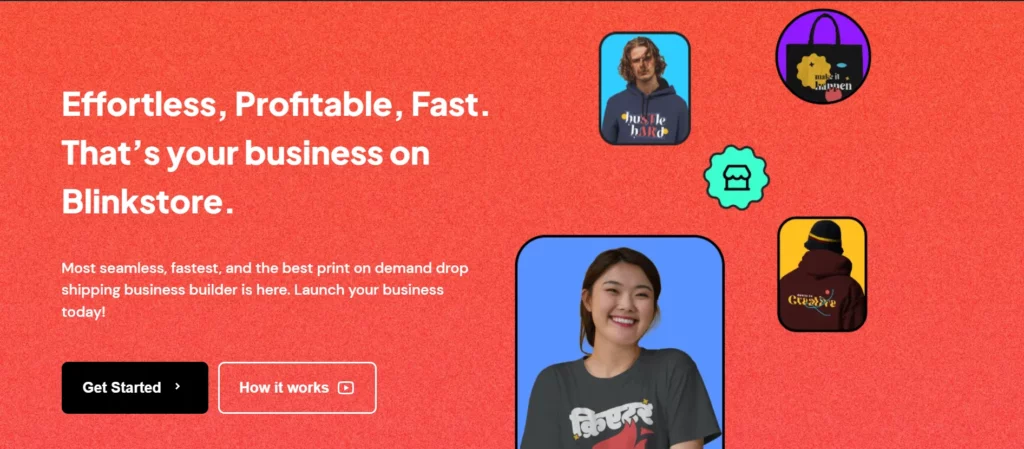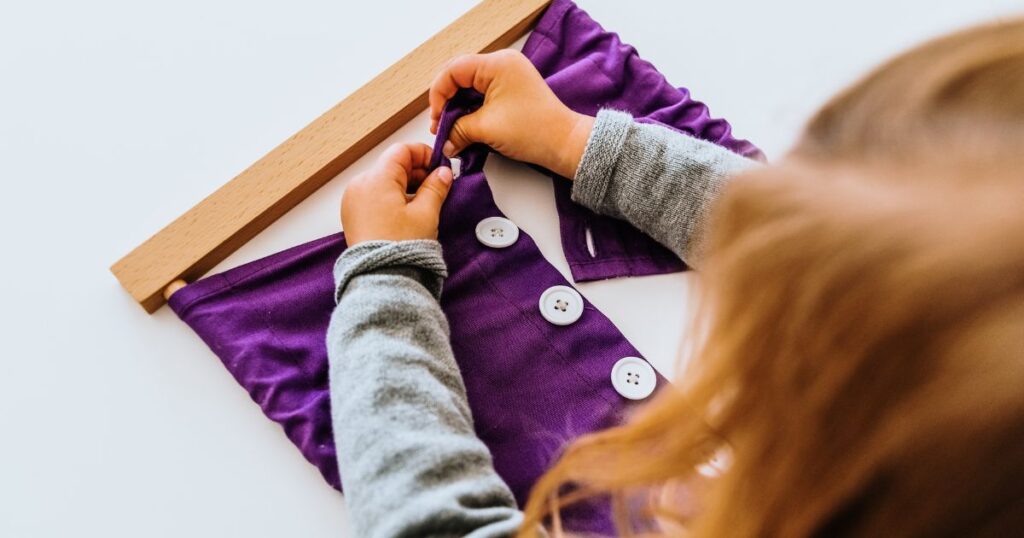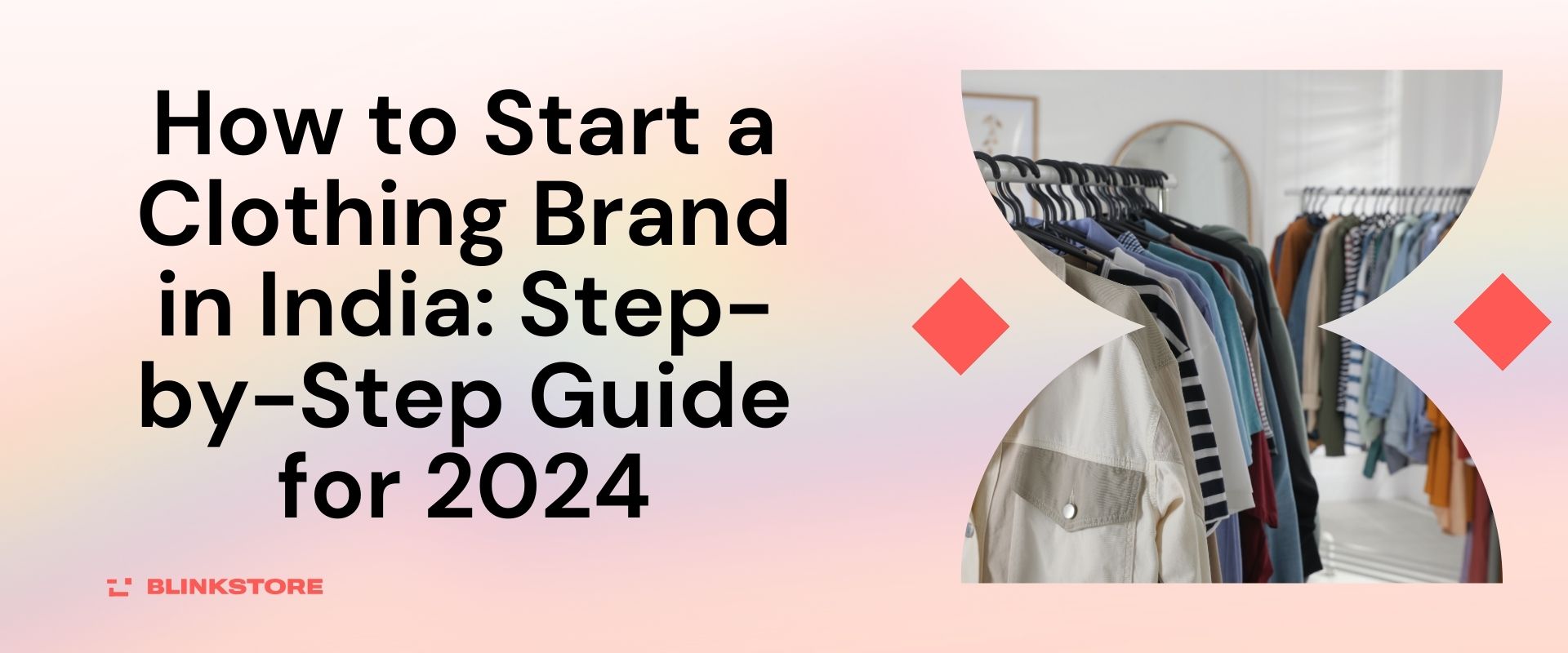Looking to start a clothing brand in India? Well, initially you will feel daunting, especially when faced with questions like, “How do I identify my target market? Where can I find reliable suppliers and manufacturers? How do I set competitive pricing while ensuring a healthy profit margin?” If these uncertainties are holding you back, fear not.
Table of Contents
Did you know? The Indian apparel market is big, with the textile and clothing industry valued at approximately $108 billion. It is projected to reach $223 billion by 2021.
This step-by-step guide is your compass, guiding you through the planning to execution stages of creating a fashion brand. We’ll make the process easy and help you establish a distinctive brand identity.
What is a Clothing Brand?

A clothing brand is a unique label or trademark associated with a collection of apparel. Beyond garments, it embodies a distinct identity, style, and ethos, differentiating it in the market. From design to marketing, a clothing brand encompasses a comprehensive process.
This creates a connection with consumers through aesthetics and values. Whether luxury or sustainable, successful brands establish a loyal customer base by resonating with their target audience.
How Much Does it Cost to Start a Clothing Line?
Understanding the financial aspects of starting a clothing line is crucial. Break down the initial costs, including manufacturing, marketing, and website development. Implement budgeting strategies to ensure your financial resources are allocated efficiently. Consider cost-saving measures without compromising the quality and integrity of your brand.
Breakdown of Initial Costs
The financial landscape can be daunting, but breaking down costs into categories makes it more manageable. Divide budget segments for fabric sourcing, manufacturing, marketing campaigns, and website development. Tools like QuickBooks can assist in meticulous financial planning.
Pro Tip: Explore crowdfunding platforms like Kickstarter or Indiegogo to raise initial capital. Engaging your future customers in the startup phase not only funds your venture but also builds a community around your brand.
Cost-Saving Strategies
Consider collaborative efforts with local manufacturers or suppliers to negotiate better deals. Leverage the power of bulk purchasing to cut production costs. Tools like Alibaba can connect you with global suppliers, providing cost-effective solutions.
Example: For instance, if your brand focuses on sustainable fashion. Specify the cost of sourcing eco-friendly materials and highlight successful sustainable clothing brands in India like FabIndia or Nicobar.
How to Start a Clothing Brand in India

Let’s get to the step-by-step guide on how to start your clothing business:
Step 1: Market Research
- Identify Your Target Audience with Precision:
- Utilize tools like Google Analytics, social media insights, or surveys to delve into specific demographics, such as age, location, and interests.
- Example: If your brand targets environmentally conscious consumers, understand their specific eco-friendly preferences.
- Competitor Analysis with Actionable Insights:
- Use competitive analysis tools like SEMrush or Ahrefs to identify competitors’ SEO strategies, keywords, and backlink sources.
- Pro Tip: Look for patterns in customer reviews of competitors to pinpoint areas of dissatisfaction and address them in your business strategy.
Step 2: Create a Business Plan
- Set SMART Goals:
- Make your business goals Specific, Measurable, Achievable, Relevant, and Time-bound (SMART) for clarity and accountability.
- Craft a Compelling USP:
- Conduct a SWOT analysis (Strengths, Weaknesses, Opportunities, Threats) to identify your unique strengths that can form the basis of your USP.
- Example: If your brand focuses on sustainable practices, emphasize this as a key differentiator.
- Budgeting Tools for Precision:
- Use budgeting tools like QuickBooks or FreshBooks to create detailed financial projections and track expenses effectively.
- Pro Tip: Allocate a specific percentage of your budget for innovative marketing strategies or unexpected expenses.
Step 3: Design and Manufacturing
- Prototype Testing and Feedback Loop:
- Prototype your designs and gather feedback from a focus group or target audience before mass production.
- Pro Tip: Collaborate with local artisans or craftsmen to add unique, locally-inspired elements to your designs.
- Explore Sustainable Manufacturing Options:
- Consider eco-friendly materials and ethical manufacturing processes to align with the growing trend of sustainable fashion.
Step 4: Supply Chain and Inventory
- Use Inventory Management Software:
- Implement inventory management software like Zoho Inventory or TradeGecko for real-time tracking and efficient stock management.
- Example: Avoid stockouts during peak seasons by forecasting demand using historical sales data.
Step 5: E-commerce Presence
- Mobile Optimization for E-commerce:
- Ensure your online store is mobile-friendly, as a significant portion of online shopping occurs on mobile devices.
- Pro Tip: Leverage mobile marketing channels like SMS or push notifications for targeted promotions.
- Explore Augmented Reality (AR) for Virtual Try-Ons:
- Implement AR features for virtual try-ons, enhancing the online shopping experience for customers.
- Example: Brands like Warby Parker use AR to allow customers to virtually try on glasses before purchase.
Step 6: Offline Presence
- Pop-up Shop Innovation:
- Experiment with themed pop-up shops or unique in-store experiences to attract and engage customers.
- Tool Recommendation: Use event management tools like Eventbrite to organize and promote pop-up events effectively.
Step 7: Marketing and Promotion
- User-Generated Content (UGC) Strategies:
- Encourage customers to share their experiences through UGC on social media, creating authentic content for your brand.
- Micro-Influencers for Targeted Reach:
- Collaborate with micro-influencers in your niche for more authentic and cost-effective promotion.
- Example: A local fashion blogger with a dedicated following can have a more significant impact on your target audience.
Step 8: Customer Service
- Implement Chatbots for Instant Support:
- Integrate chatbots on your website to provide instant customer support and gather valuable insights.
- Pro Tip: Use AI-powered chatbots for personalized product recommendations based on customer preferences.
Step 9: Scaling and Expansion
- Global Market Entry Strategies:
- Research and consider entering international markets through e-commerce platforms or collaborations with global retailers.
- Example: Indian fashion brands like FabIndia successfully expanded to international markets by adapting to local preferences.
- Invest in Analytics for Strategic Decisions:
- Utilize analytics tools like Google Analytics or Hotjar to gather data on customer behavior, helping inform strategic business decisions.
Legalities, Registration, and Protecting Your Brand Identity
This is an important step in building your successful clothing brand:
1. Register Your Brand Name and Logo
Commence your journey by securing your brand name and logo. This isn’t just a legal formality; it’s a shield against potential imitations and brand dilution. Utilize online platforms like the Trademark Electronic Application System (TEAS) to streamline the registration process.
2. Obtain Necessary Licenses and Permits
Ensure you have all the requisite licenses and permits to operate your clothing business seamlessly. This includes understanding and adhering to local regulations, such as the Goods and Services Tax (GST) in India. Tools like ClearTax can assist in navigating the complex tax landscape.
3. Compliance and Future-Proofing
Compliance with taxation and business regulations is an ongoing process. Consider consulting legal professionals or using services like LegalZoom to stay ahead of any changes. This not only mitigates legal risks but also future-proofs your business against evolving regulatory landscapes.
Pro Tip: Consider conducting a comprehensive trademark search before finalizing your brand name to avoid potential conflicts. This proactive step can save you from legal hassles in the long run.
Also, get complete GST rules in our guide “Is dropshipping legal in India“.
How to Start an Online Clothing Brand in India?

To start an online clothing store choose a unique and memorable domain name that reflects your brand identity. Set up an e-commerce website using popular platforms like Blinkstore or WooCommerce. Ensure seamless integration of secure payment gateways and implement effective inventory management systems to streamline your online operations.
1. Domain Name Selection
Selecting a domain name is more than an online address; it’s your brand’s digital identity. Use tools like Namecheap or GoDaddy to check domain availability and ensure it aligns with your brand image.
2. E-commerce Platform Selection
The choice of your e-commerce platform is pivotal. Platforms like Blinkstore offer user-friendly interfaces, while WooCommerce provides flexibility for customization. Choose based on your brand’s specific needs and future scalability.
3. Secure Payment Gateways
The security of online transactions is paramount. Integrate reliable payment gateways such as Razorpay or PayU to instill trust among your customers. Clearly communicate the security measures you’ve implemented to enhance customer confidence.
4. Inventory Management
Efficient inventory management ensures a seamless customer experience. Utilize tools like Zoho Inventory or TradeGecko to track stock levels, automate reorder processes, and avoid stockouts.
Pro Tip: Implement a responsive and mobile-friendly design for your website. With over 90% of internet users in India accessing content through mobile devices, this ensures a broader reach for your online clothing store.
What Should I Buy for My Clothing Brand?

The quality of your products is a defining factor for the success of your clothing brand. Source high-quality fabrics and materials that align with your brand’s aesthetic. Decide whether you’ll opt for external manufacturers or consider in-house production. Create a comprehensive inventory of clothing items that resonate with your target audience.
1. High-Quality Materials and Suppliers
Invest time in researching and establishing relationships with reliable suppliers. Consider platforms like Textile Infomedia or IndiaMART to connect with fabric manufacturers and wholesalers. Specify the type of materials you’ll be using, whether it’s organic cotton, silk, or sustainable alternatives.
2. Manufacturing Considerations
Choosing between external manufacturers and in-house production depends on various factors. External manufacturers may provide cost efficiency, while in-house production offers greater control over quality. Brands like W for Woman exemplify successful in-house production strategies.
3. Comprehensive Inventory Planning
Create a diverse yet cohesive inventory that caters to your target audience. Consider the preferences and needs of your niche market. Use tools like Trello or Asana for efficient project and inventory management.
Examples: For instance, if your clothing brand specializes in athleisure wear, mention specific materials like moisture-wicking fabrics and provide examples of successful athleisure brands in India, such as HRX by Hrithik Roshan.
How Can I Market My Clothing Brand?

Building a strong brand identity is crucial for successful marketing. Develop a memorable logo and brand image that resonates with your audience. Utilize social media platforms for strategic marketing campaigns, engaging with your audience and creating a loyal customer base. Explore influencer collaborations and partnerships to amplify your brand’s reach. Implement effective SEO strategies to enhance your online visibility.
1. Brand Identity and Logo Design
Invest in a professional logo design that encapsulates your brand’s essence. Utilize platforms like Fiverr or 99designs to connect with talented graphic designers who can bring your vision to life. Ensure consistency in your branding across all platforms for a cohesive image.
2. Social Media Engagement
Developing a robust social media strategy is essential for brand visibility. Utilize platforms like Instagram, Facebook, and Pinterest to showcase your products visually. Schedule posts using tools like Later or Buffer to maintain a consistent and engaging online presence.
3. Influencer Collaborations
Explore partnerships with influencers in the fashion and lifestyle niche. Tools like Influencity or Upfluence can help identify influencers aligned with your brand values. Craft compelling collaborations that authentically showcase your clothing line.
4. SEO Strategies
Optimizing your online presence for search engines is imperative. Conduct keyword research using tools like SEMrush or Ahrefs to identify relevant terms for your niche. Incorporate these keywords into your website content, product descriptions, and blog posts for improved search engine rankings.
Examples of Successful Online Clothing Brands in India
Learning from the success stories of established clothing brands in India can provide valuable insights. Explore case studies of prominent brands, analyzing their marketing strategies, brand positioning, and customer engagement. These examples serve as inspiration and guidance for your own journey in the competitive fashion market.
- Case Studies: Delve into case studies of successful Indian clothing brands such as Myntra, Bewakoof, or Ritu Kumar. Analyze how these brands have effectively utilized digital marketing, customer engagement, and product positioning to become industry leaders.
- Marketing Strategies: Highlight specific marketing strategies employed by successful brands. For instance, Myntra’s use of personalized recommendations based on user preferences or Bewakoof’s focus on quirky and relatable marketing campaigns. Implementing similar strategies tailored to your brand can enhance your chances of success.
- Customer Engagement: Examine how these brands engage with their audience. Whether it’s through interactive social media campaigns, loyalty programs, or exclusive promotions, understanding the nuances of customer engagement can inspire your own creative initiatives.
Conclusion
In conclusion, starting a clothing brand in India in 2024 requires a combination of passion, strategic planning, and adaptability. The fashion industry is dynamic, and staying ahead involves continuous learning and innovation. Recap the key steps covered in this guide and offer words of encouragement for those embarking on this exciting entrepreneurial journey.
FAQs – How to Start a Clothing Brand in India
Here are some frequently asked questions about How to Start a Clothing Brand in India.
How much does it cost to start a clothing brand in India?
Starting a clothing brand’s cost can vary widely based on factors like scale, niche, and business model. However, a rough estimate for a small-scale venture could range from INR 5 lakhs to 20 lakhs. This includes expenses for manufacturing, branding, online presence, and legal formalities. Keep in mind that these figures are indicative, and thorough market research is essential for accurate budgeting.
Can I start my own clothing brand in India?
Yes, India offers a vibrant market for clothing brands, and starting your own brand is a viable venture. From designing your collection to selecting manufacturers and establishing an online presence, the process involves careful planning and execution. Ensure you comply with legal requirements, define your niche, and focus on unique selling propositions to stand out in the competitive market.
Are clothing brands profitable in India?
Clothing brands can be profitable in India, given the diverse consumer base and growing fashion consciousness. Success depends on factors like market positioning, quality, branding, and effective marketing. Conduct thorough market research, understand consumer preferences, and create a unique value proposition to increase the likelihood of profitability.
How can I register my clothing brand in India?
Registering your clothing brand involves several steps:
a. Choose a Business Structure: Decide on a legal structure, such as a sole proprietorship, partnership, or private limited company.
b. Register Your Business: Visit the Ministry of Corporate Affairs (MCA) website or use online services like Vakilsearch to register your business. Prepare necessary documents, including PAN and Aadhar cards.
c. Trademark Your Brand: Protect your brand identity by registering the brand name and logo with the Trademark Registry. This safeguards your intellectual property.
d. GST Registration: If your annual turnover exceeds the threshold, register for Goods and Services Tax (GST) through the GST portal.
e. MSME Registration: Consider registering as a Micro, Small, and Medium Enterprises (MSME) for potential benefits.
